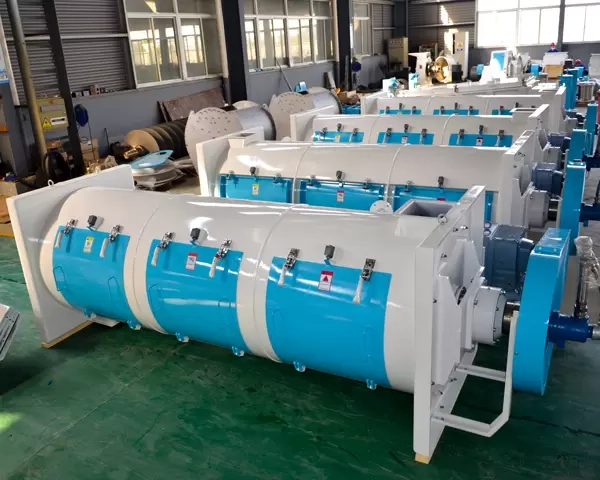Feed pellet mill is a device used to process feed pellets. It can process various raw materials into pellet feed and is widely used in animal husbandry and breeding industries. The selection of raw materials for feed pellet mill is crucial to producing high-quality feed pellets. This article will introduce the importance of raw material selection, common feed pellet raw materials and precautions for raw material selection.

First of all, the selection of raw materials for feed pellet mill should consider the nutritional content of the feed. Different raw materials contain different nutrients, such as protein, carbohydrates, fats, vitamins and minerals, and the content and proportion of these nutrients will directly affect the quality of feed pellets. Therefore, when selecting raw materials, factors such as nutritional content, palatability, price, and processing performance of the raw materials need to be comprehensively considered to ensure the production of high-quality feed pellets that meet the nutritional needs of animals.
Common feed pellet raw materials include cereals, soybean meal, fish meal, bone meal, protein, vitamins, etc. Cereal raw materials, such as corn, wheat, rice, etc., are rich in carbohydrates and cellulose and are the main energy source of feed pellets; soybean meal raw materials, such as soybean meal, bean cake, etc., are rich in protein and are the main protein source of feed pellets; Fishmeal raw materials, such as fish meal, fish feed, etc., are rich in protein and fat and are an important source of protein and fat in feed pellets; bone meal raw materials, such as bone meal, calcium phosphate, etc., are rich in minerals and are the main minerals in feed pellets. Source; protein raw materials, such as fish meal, soybean meal, etc., are rich in protein and are an important source of protein for feed pellets; vitamin raw materials, such as vitamin premix, vitamin raw materials, etc., are rich in vitamins and are the main source of vitamins for feed pellets.
When selecting feed pellet raw materials, you need to pay attention to the following aspects. First of all, the types and proportions of raw materials must be determined according to the nutritional needs and growth and development stages of different animals. Different types of animals have different nutritional requirements. For example, broilers have higher requirements for protein, while dairy cows have higher requirements for fiber. Secondly, choose high-quality raw materials. High-quality raw materials contain high nutritional content, which can improve the nutritional value and taste of feed pellets and is beneficial to the growth and production of animals. Again, pay attention to the processing properties of the raw materials. Some raw materials may need to be ground, mixed, expanded, etc. to be suitable for the production of feed pellets, so the processing performance and processing technology of the raw materials need to be considered. Finally, pay attention to the price and availability of raw materials. The price and supply of raw materials will directly affect the production cost and stability of feed pellets, so the price and supply of raw materials need to be considered comprehensively.
In addition, the selection of raw materials for feed pellet mill should also consider the processing performance of the raw materials. The processing performance of raw materials directly affects the processing effect and production efficiency of feed pellet mill. Generally speaking, the processing performance of raw materials includes factors such as particle size, moisture content, and viscosity of raw materials. For raw materials with larger particle size, they need to be crushed to facilitate the processing of feed pellet mill; for raw materials with higher moisture content, they need to be dried to avoid affecting the forming effect of feed pellets; for raw materials with higher viscosity, it is necessary to add Certain auxiliary materials to improve the fluidity of raw materials. Therefore, the processing performance of the raw materials needs to be considered when selecting raw materials to ensure the normal operation of the feed pellet mill.
In summary, raw material selection has a crucial impact on the quality and nutritional value of feed pellets. When selecting feed pellet raw materials, factors such as nutritional content, palatability, price, and processing performance of the raw materials need to be comprehensively considered to ensure the production of high-quality feed pellets that meet the nutritional needs of animals. I hope this article can help you understand the raw material selection of feed pellet mill.